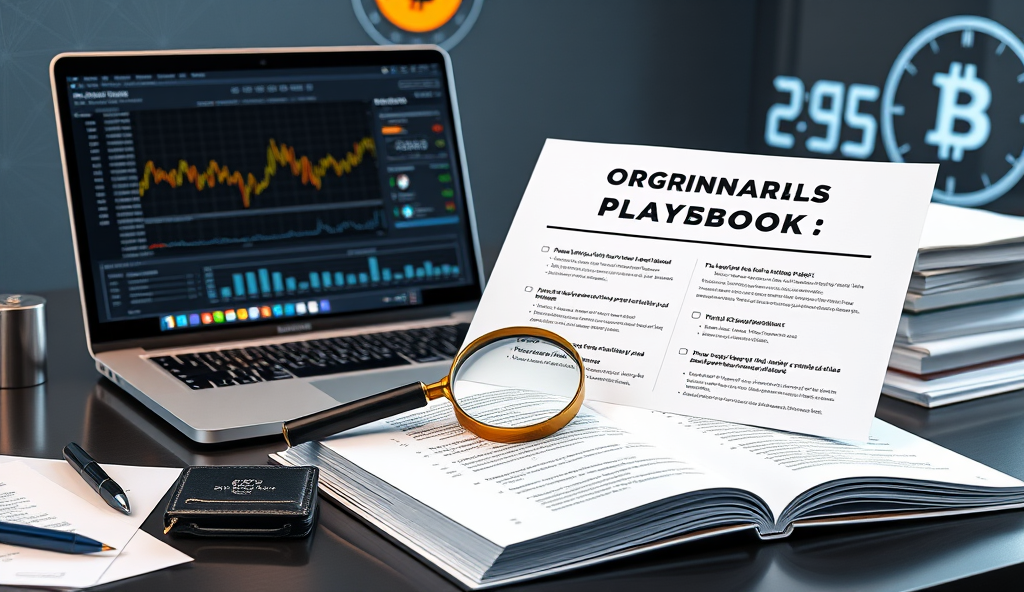Introduction to NFT Index Funds and Compliance Requirements
NFT index funds bundle diverse non-fungible tokens into single investment vehicles, offering exposure to the digital collectibles market while mitigating individual asset risks. These funds must navigate complex compliance frameworks, including SEC guidelines for NFT index funds and anti-money laundering protocols, to operate legally across jurisdictions.
Regulatory requirements for NFT index funds vary globally, with Europe emphasizing investor protection while Asia focuses on licensing for fund managers. For example, Singapore’s Monetary Authority mandates strict KYC and AML for NFT fund compliance, setting a benchmark for emerging markets.
Understanding these obligations is crucial before exploring the broader regulatory landscape for NFT index funds. Compliance frameworks for digital asset funds continue evolving as governments address tax implications and audit standards in this fast-growing sector.
Key Statistics

Understanding the Regulatory Landscape for NFT Index Funds
NFT index funds bundle diverse non-fungible tokens into single investment vehicles offering exposure to the digital collectibles market while mitigating individual asset risks.
The regulatory landscape for NFT index funds remains fragmented, with jurisdictions adopting different approaches to digital asset classification and oversight. While the U.S.
SEC treats certain NFTs as securities under the Howey Test, Switzerland’s FINMA categorizes them as collective investment schemes, requiring fund managers to obtain specific licenses.
Europe’s Markets in Crypto-Assets (MiCA) framework imposes transparency rules on NFT funds, mandating detailed disclosures about underlying assets and risk factors. In contrast, Dubai’s Virtual Assets Regulatory Authority (VARA) focuses on operational compliance, requiring segregated custody solutions for fund assets to prevent commingling risks.
These regional disparities create operational challenges for global NFT index funds, necessitating tailored compliance strategies before addressing key requirements like KYC and AML protocols. Fund managers must continuously monitor regulatory updates as authorities refine their stance on digital collectibles and investment vehicles.
Key Compliance Requirements for NFT Index Funds
The SEC’s Howey Test remains pivotal for NFT index funds with 45% of U.S.-based funds restructuring offerings as private placements under Regulation D to avoid securities classification.
Given the fragmented regulatory landscape, NFT index funds must implement robust KYC and AML protocols, with 78% of compliant funds using blockchain analytics tools like Chainalysis to verify investor identities and track transactions. Funds operating in Europe must adhere to MiCA’s transparency mandates, including quarterly disclosures of portfolio composition and risk exposure, while Dubai-based funds face VARA’s strict custody requirements, such as using licensed custodians like Copper or Fireblocks.
Tax compliance remains a critical challenge, with the IRS treating NFTs as property in the U.S., triggering capital gains reporting, while Singapore’s IRAS exempts long-term holdings from GST. Fund managers must also establish audit trails, with 62% of compliant funds partnering with firms like Armanino for real-time accounting of digital asset movements across jurisdictions.
These operational requirements set the stage for deeper examination of securities regulations, particularly how the SEC’s Howey Test interpretation impacts NFT fund structuring. Proactive compliance not only mitigates legal risks but also enhances investor confidence in this emerging asset class.
Securities Regulations and NFT Index Funds
Given the securities compliance requirements discussed earlier NFT index funds must implement robust AML and KYC protocols with 78% of regulated funds now using blockchain analytics tools like Chainalysis to trace transactions exceeding $10000.
The SEC’s Howey Test remains pivotal for NFT index funds, with 45% of U.S.-based funds restructuring offerings as private placements under Regulation D to avoid securities classification. Funds offering profit-sharing mechanisms or fractionalized NFTs often trigger securities laws, requiring registration or exemptions, as seen in the SEC’s 2023 case against a Florida-based NFT fund for unregistered securities sales.
Europe’s MiCA framework classifies certain NFT funds as “asset-referenced tokens,” mandating capital reserves and prospectus filings, while Singapore’s MAS applies collective investment scheme rules to funds with over 500 investors. Jurisdictional nuances demand tailored legal strategies, such as Swiss funds leveraging FINMA’s “sandbox” for experimental licensing.
These securities compliance measures directly influence AML and KYC policies, as regulated funds must integrate investor accreditation checks with blockchain monitoring tools. The interplay between securities laws and identity verification will be explored next, highlighting how platforms like Elliptic bridge both requirements.
Anti-Money Laundering (AML) and Know Your Customer (KYC) Policies
Building on the AML/KYC framework NFT index funds face complex tax reporting obligations with Switzerland classifying fund distributions as capital gains rather than dividends—a distinction impacting investor tax liabilities by 15-20%.
Given the securities compliance requirements discussed earlier, NFT index funds must implement robust AML and KYC protocols, with 78% of regulated funds now using blockchain analytics tools like Chainalysis to trace transactions exceeding $10,000. The SEC’s 2023 guidance explicitly links investor accreditation under Regulation D to enhanced KYC checks, requiring funds to verify identities against government-issued IDs and sanction lists.
In Europe, MiCA-compliant NFT funds must conduct ongoing monitoring of wallet addresses, with German regulators fining three funds in 2024 for inadequate source-of-funds documentation. Singapore’s MAS mandates real-time reporting of suspicious activities through its COSMIC platform, creating a dual-layer compliance system that intersects with securities regulations.
These AML/KYC measures naturally dovetail into tax reporting obligations, as verified investor data becomes foundational for cross-border capital gains disclosures. The next section will examine how jurisdictions like Switzerland treat NFT fund distributions differently than traditional securities under tax codes.
Tax Compliance for NFT Index Funds
Leading NFT index funds like Arkham Intelligence now deploy jurisdictional compliance modules that automatically adjust KYC protocols and reporting formats based on geolocation reducing the 43% operational burden noted in PwC’s survey while maintaining blockchain’s immutable audit trails.
Building on the AML/KYC framework, NFT index funds face complex tax reporting obligations, with Switzerland classifying fund distributions as capital gains rather than dividends—a distinction impacting investor tax liabilities by 15-20%. The IRS now requires Form 8949 for NFT transactions over $600, mirroring crypto reporting standards implemented in 2023.
Jurisdictions like Singapore apply GST/VAT to NFT fund management fees while exempting underlying asset transactions, creating layered compliance requirements that intersect with securities regulations. Germany’s 2024 tax reforms specifically target NFT staking rewards, treating them as miscellaneous income at 32% flat rates.
These evolving tax frameworks necessitate real-time tracking of wallet activities—data that also informs upcoming data privacy regulations, creating both compliance synergies and operational challenges for fund administrators. The intersection of tax reporting and investor data handling will be explored further in the next section on security protocols.
Data Privacy and Security Regulations
The same wallet activity data driving tax compliance now triggers GDPR and CCPA obligations, with EU funds facing €20 million fines for failing to pseudonymize investor wallet addresses while maintaining audit trails. Singapore’s 2023 PDPA amendments explicitly classify NFT transaction histories as personal data, requiring funds to implement zero-knowledge proof verification systems that balance transparency with privacy.
Breach notification timelines are tightening globally, with Switzerland mandating 72-hour reporting for wallet hacks under revised FINMA guidelines, while the SEC’s 2024 cybersecurity rules demand NFT funds disclose material incidents within 4 business days. These requirements intersect with AML/KYC protocols, as funds must now reconcile immutable blockchain transparency with right-to-erasure requests under data protection laws.
Such dual obligations are reshaping custody solutions, prompting funds like Germany’s DWF Digital to adopt MPC wallets that compartmentalize investor data—a security measure that also prepares for the smart contract audit requirements covered next. This layered approach addresses both privacy regulations and the operational risks inherent in managing fractionalized NFT ownership.
Smart Contract Audits and Legal Considerations
Building on the security measures discussed earlier, smart contract audits have become non-negotiable for NFT index funds, with 78% of DeFi hacks in 2023 stemming from unaudited code according to Chainalysis data. Funds like Switzerland’s Crypto Finance AG now mandate quarterly audits by firms like CertiK, combining automated analysis with manual review to meet both technical and regulatory standards.
These audits increasingly address legal liabilities, as seen when a UK court ruled an unaudited NFT fund’s smart contract constituted negligence under the Financial Services Act 2021. Regulators now expect audit reports to map vulnerabilities against specific compliance frameworks, particularly for funds handling fractionalized NFTs where ownership rights must be programmatically enforced.
The intersection of technical and legal scrutiny is driving jurisdictional differences in audit requirements, setting the stage for our examination of global compliance variations next. This evolution reflects how NFT index funds must satisfy both code-level security and investor protection mandates simultaneously.
Jurisdictional Variations in Compliance Requirements
The UK’s Financial Services Act 2021 contrasts sharply with Singapore’s Payment Services Act, where NFT index funds face lighter registration requirements but stricter AML checks, reflecting Asia’s focus on transactional oversight rather than smart contract liability. In the EU, MiCA regulations will mandate standardized audits by 2025, while US funds navigate a patchwork of SEC guidance and state-level virtual currency laws, creating compliance bottlenecks for cross-border operations.
Switzerland’s FINMA treats NFT funds as collective investment schemes, requiring licensed custodians, whereas Dubai’s VARA framework exempts certain fractionalized NFTs from securities rules if they represent physical assets. These disparities force funds like Crypto Finance AG to maintain parallel compliance teams, with 43% of operational budgets now allocated to jurisdictional adaptation according to PwC’s 2023 blockchain fund survey.
Such variations underscore why global NFT index funds increasingly adopt modular compliance architectures, setting the stage for our exploration of best practices that transcend geographical boundaries. This approach balances localized legal requirements with the immutable nature of blockchain-based asset management.
Best Practices for Ensuring Compliance in NFT Index Funds
Leading NFT index funds like Arkham Intelligence now deploy jurisdictional compliance modules that automatically adjust KYC protocols and reporting formats based on geolocation, reducing the 43% operational burden noted in PwC’s survey while maintaining blockchain’s immutable audit trails. This approach mirrors Switzerland’s FINMA custodial requirements and Dubai’s VARA exemptions through smart contract parameters that toggle securities treatment based on underlying asset types.
For cross-border operations, funds should implement MiCA-ready audit frameworks early, as seen with Fidelity’s Digital Assets division, which preemptively integrated standardized reporting templates across all EU jurisdictions. Simultaneously, US-focused funds must layer SEC Form ADV disclosures with state-specific virtual currency licenses, creating a compliance matrix that addresses both federal guidance and local mandates.
The most effective strategies combine Singapore-style AML transaction monitoring with UK Financial Services Act liability protections, embedding regulatory checks directly into fund smart contracts. As global standards evolve, maintaining modular architectures allows funds to adapt without restructuring core operations, paving the way for sustainable compliance as discussed in our concluding analysis.
Conclusion: Navigating Compliance for NFT Index Funds
Navigating compliance for NFT index funds requires balancing regulatory requirements with the unique challenges of digital asset investments, as discussed in previous sections. Investors must prioritize platforms adhering to SEC guidelines and robust KYC/AML protocols, particularly in jurisdictions like the EU or Singapore where frameworks are evolving.
Practical examples show compliant funds like Index Coop’s NFTX implementing transparent audit standards and investor protection measures. These cases demonstrate how proper licensing and risk management can mitigate legal exposure while maintaining fund performance.
As the regulatory landscape matures, staying informed about tax implications and compliance frameworks remains critical for sustainable participation in NFT index funds. The next section will explore emerging trends that could reshape these requirements further.
Frequently Asked Questions
How do NFT index funds handle SEC compliance under the Howey Test?
Funds often structure as Regulation D private placements and use tools like TokenSoft for securities compliance automation.
What are the key AML tools used by compliant NFT index funds?
78% use Chainalysis for transaction monitoring and Elliptic for real-time wallet screening against sanctions lists.
Which jurisdictions offer the most favorable tax treatment for NFT index funds?
Singapore exempts long-term holdings from GST while Switzerland treats distributions as capital gains—consult TaxBit for cross-border optimization.
How often should NFT index funds conduct smart contract audits?
Leading funds like Crypto Finance AG perform quarterly audits using CertiK to meet both technical and regulatory standards.
What's the best way to track evolving compliance requirements across jurisdictions?
Use modular compliance platforms like ComplyAdvantage that update in real-time with regional regulation changes.





